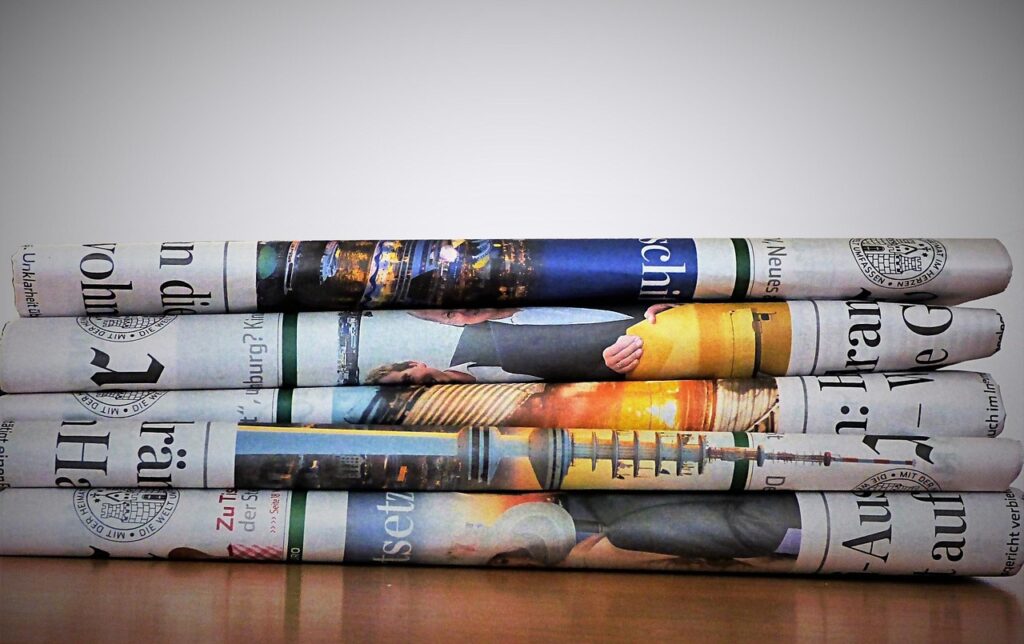Local newspapers are grappling with a problem that threatens their very existence. Editors and publishers are coming to understand that survival in part depends on converting their publications from mere sources of information into gathering places, meaning they also need to get potential attendees off the screen and into a room.
From coffee meetups with columnists to local business expos, such face-to-face gatherings are perceived now as indispensable tools for fostering loyalty in an era when readers have limitless content at their fingertips.
However, hosting a successful community event doesn’t only involve selecting the date and sending out email invitations. What makes an event seem ad hoc, as opposed to something that builds your newspaper’s trustworthiness? It frequently has to do with the quality of the physical materials people see and read at an event.
Why print materials matter for community events
When a newspaper is involved in such events as subscription appreciation nights, town hall meetings, local business expos, the physical framing of these occasions reinforces that impression of professionalism and care. Registration materials, badges, program guides to the event, and signs are all used as tools to guide attendees around while showcasing the newspaper’s brand in its marketplace.
Till now readers have more trust in print newspapers than digital outlets and the same is true when newspapers show up socially. A well-executed event poster or slickly printed program guide exhibits this level of care that readers expect from the publication they’re reading.
Common materials newspapers order for events
Good print products for reader-appreciation events works and a lot of publications like Helloprint produce really good produce materials for a reader appreciation day. The standard order includes custom banners featuring the name of your newspaper, event schedules on heavy-stock paper and a vendor booth or registration table cover.
Many newspapers issue special commemorative editions or event guides as keepsakes, particularly for milestone events such as anniversaries or awards nights.
Budget considerations for smaller publications
Local newspapers are operated on thin margins, so the cost savings of some reasonable printing solutions is all that stands in the way between hosting an event and canceling it. Per-unit costs usually go down when buying in bulk, yet smaller publications may not require 500 banners or 1,000 programs.
With on-demand printing, newspapers can order only what they need, no warehouse storage, and no waste.
How to manage timing and logistics
The event planning timelines for newspapers become murky during election seasons or breaking news situations when staff attention is stretched. This is where trusted print partners come in.
Most publications print a few weeks before an event to allow for wiggle room in the design and potential shipping hang-ups. A day-of rush printing option is available at additional cost, but planning ahead saves cash that can be spent on stiffer refreshments or more spacious digs.
Building stronger community connections
When publishers invest in excellent event materials, they show the same commitment to quality that helped to gain readers’ trust in the first place.
There is also lasting marketing value received from printed collateral at events. People snapping photos of branded banners or sharing event programs on social media offer the newspaper a reach beyond those in attendance.
Services like Helloprint provide a menu of pre-designed templates, allowing smaller publications to design professional materials without the need for bespoke graphic designers, opening up the possibility of sophisticated event branding to newsroom staff who may be in shorter supply.
Creating memorable unboxing experiences
Some innovative publications have begun creating branded event packages for key community figures, arriving at their homes before major announcements or events. These carefully curated packages might include a printed invitation, detailed event information, a small branded gift, and perhaps a personalized handwritten note from the editor. The unboxing experience generates genuine excitement and signals that the publication values these relationships enough to invest significant resources. Recipients frequently share photos of these packages on social media, creating organic promotion that reaches far beyond the intended audience. This approach transforms event promotion from a transactional process into a genuine relationship-building opportunity that strengthens community ties.
Sustainability considerations for print production
As environmental concerns become increasingly important to modern readers, newspapers should prioritize sustainable printing options when planning events. Choosing recycled paper stocks, vegetable-based inks, and responsible printing partners demonstrates authentic commitment to values that many community members share. This environmental consciousness can actually strengthen brand loyalty among eco-aware readers. Fortunately, many modern print providers now offer sustainable options that don’t significantly increase production costs, making environmental responsibility an accessible choice even for publications operating on tight budgets.
Integrating digital and print for maximum impact
The most effective event strategies seamlessly combine print and digital touchpoints. A beautifully designed printed program guide should include QR codes linking to exclusive digital content, event-specific social media hashtags, or online resources available only to attendees. This integration encourages continued engagement both during and after the event, extending the marketing reach across multiple channels. Event photos featuring the printed materials can be shared digitally, and attendees might snap pictures of QR codes for later reference. This omnichannel approach ensures that investments in print materials generate value across both traditional and digital platforms.
Measuring success through print materials
Publications often overlook the role of print materials when evaluating event success. However, tracking metrics such as attendance rates, attendee feedback about event professionalism, and social media mentions of branded materials provides invaluable data. Some newspapers include brief surveys in programs asking how attendees learned about the event, revealing whether print materials or digital promotion drove attendance. Understanding these patterns helps optimize future event planning and budget allocation. Maintaining physical samples of event materials creates a valuable portfolio demonstrating your publication’s evolution and ensuring consistency across multiple events throughout the year.
